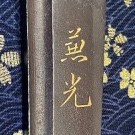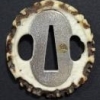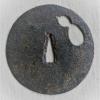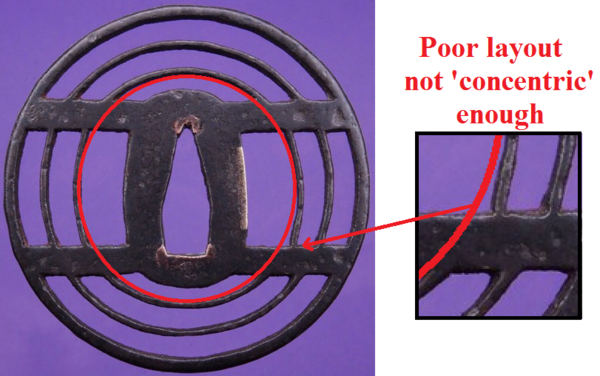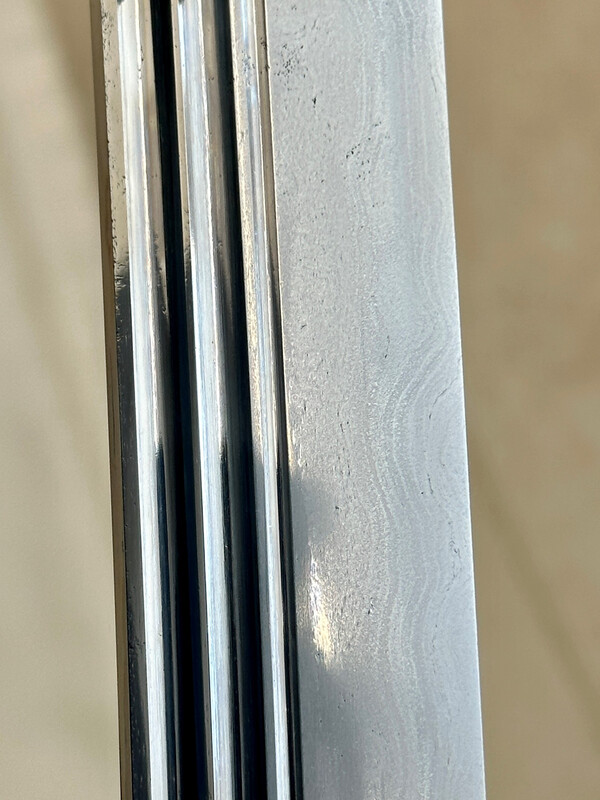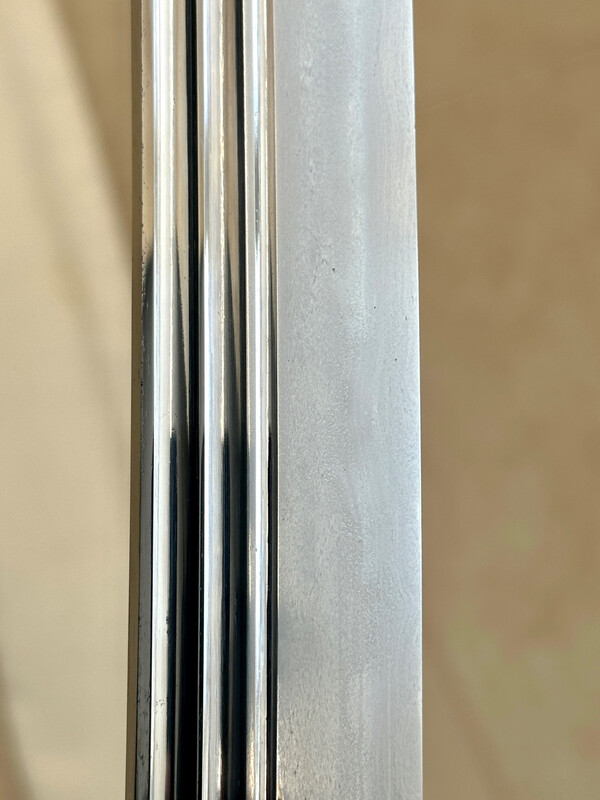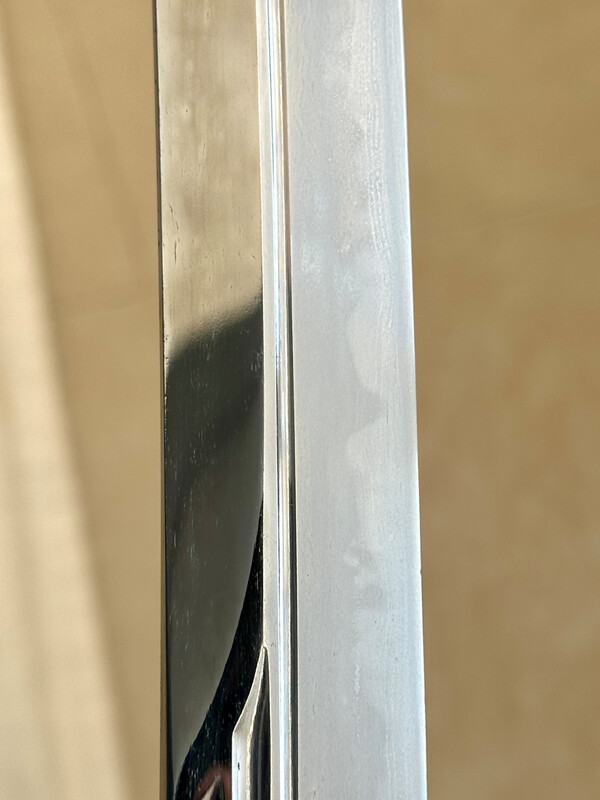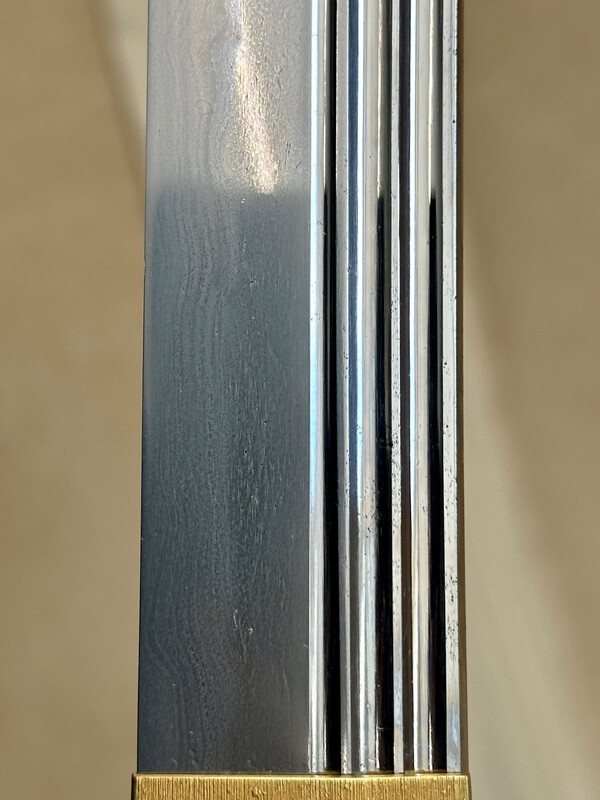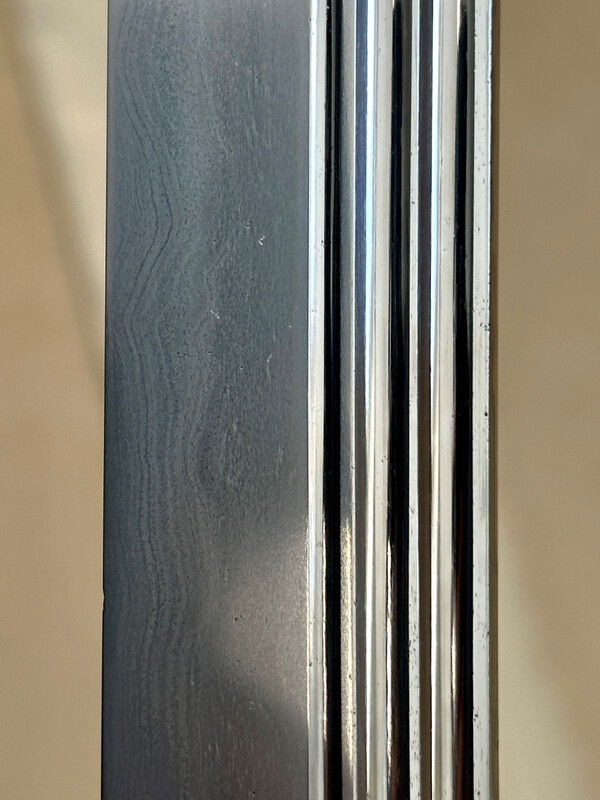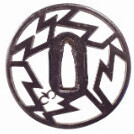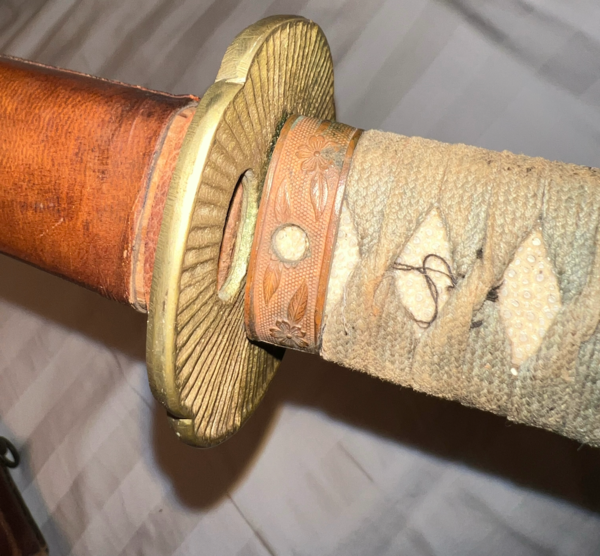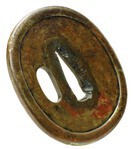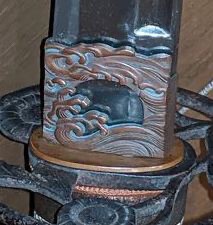Leaderboard
Popular Content
Showing content with the highest reputation on 03/11/2023 in all areas
-
For maximum benefit and most trusted...I think NBTHK. But a US shinsa is convenient and much cheaper, and frankly I would generally regard any of the papers from all 3 organizations to be far better than no papers. I would happily submit to a US shinsa. I accept that all 3 groups know far more than me. Also, papers are indeed better when selling. Especially at the mid level. At the upper levels, collectors are usually more fussy. There is no real downside to papers, aside from the expense. If you can afford it, and the return on investment isn't your primary focus, go for it. But don't do it just for the money.5 points
-
Gosh, I have to say that Nick Komiya was a real treasure to us Gendato gunto collectors. That doc with the red border around the 27 smiths on display the Matsuzakaya Dept. Store there in Ginza in 1942 is a treasure to me. In those 27 names is Tsukamoto Masakazu (col 4 from R, top), the maker of a very nice gunto in RS mounts that I own (also listed is his younger bro Tsukamoto Okimasa (col 1 from R top) and a 'middle' brother Kasama (born Tsukamoto) Kiyokazu (col 3 from R bot). Who could ask for better historical records for their collection than the docs Nick dug out of the archives. What a loss to us is his passing. Regards...4 points
-
Its a fake one. You have the right feeling about it.4 points
-
4 points
-
4 points
-
Thomas, Those two pictures are very interesting. The amount of uncertainty in the collecting world definitely makes the hobby exciting. You start to realize how each item is a small piece in solving a much larger puzzle. I like reading all the differing opinions on these swords too. I am glad the post spawned further discussion on this topic. Conway4 points
-
Column 2 Hokke Saburo Column 4 Yamamura Sukeyuki (mentioned on Jinsoo Kim's site). Tanaka Munetsugu is correct Column 5 I think you are right. It must be a misprint of Kunitada Column 6 Toriu (also Toryu, Torio, Torisei, Toriike, Torii). Toriu and Torio seem to be the most common. Hard to know unless we find a contemporary document that shows the pronunciation.3 points
-
Hi Matt, Forgive me for answering a question you didn't ask: beginners should not be buying Japanese swords at auction. Unless you knew the answers to the questions you asked and more before the sale, you should have stayed away from it. You were buying blind, which is an easy way to get burned. With knowledge you can try the auctions; until then you need a dealer who knows a lot and can be trusted. Grey3 points
-
3 points
-
Depends. An example. I could own an OBVIOUS late Muromachi Mino Tanto, signed Kane (whatever), with everything correct right down to the yasurime. I know its genuine but a great number wont. If it don't have papers, your limiting any future sale to those that are able to verify and accept for themselves OR would need to be papered for newbies and the ignorant to purchase. Lack of papers must reflect price. Then you have price, many wont pay for an expensive piece without papers, which is understandable. The big grey area is Mumei and the thousands of oddball blades that throw a spanner in the works. Some folk cant accept and need to know so head to shinsa. I dont feel any real contentment comes from such blades regarding maker, even after attaining papers, but that's me. Some beautiful mid level blades out there without papers and owners that have been able to research and come up with their own opinions, isn't that what this hobby is about. Tons of variables, set by the blade in question and the differing folks that buys them.3 points
-
I used the wrong link for item below......it should be Thomas' post: Mal, I thought you might enjoy reading this post by Nick Komiya. 1941 IJA Weapons Prices in today's values, Post #14 Source document can be found at the link below. 全国現代刀匠作刀日本刀展覧会開催の件 I found this mail from Thomas and the original from Nick Komiya very interesting, especially the list of 27 swordsmiths invited to display swords in July 1942. Seems to be a selection of better tosho of the time, so I tried to translate and identify. Got most of them but we got stuck of some. Any assistance / correction is most welcome.3 points
-
It's issued by the Teppō Tōken Kenkyū Kai (鉄砲刀剣研究会). It's a dealer-affiliated group based in Osaka. I don't know if they are still around. Teppō Tōken Kenkyū Kai = Gun and Sword Research Association I don't know if that's their official English name, or if they even have one.3 points
-
I personally don't really care about papers but I believe they may increase your chances for reselling as some buyers will only buy papered items and others will find it reassuring to have a paper confirming that a piece is genuine. I sometimes buy from Aoi Arts and I asked them twice to submit a sword to shinsa for me. The cost is modest (around 250 EUR) and since the item is already in Japan, you don't have the hassle of shipping the item overseas, paying an agent for the paperwork. The downside is that you usually need to wait several weeks or months but I'm fine with that.3 points
-
3 points
-
The Concentric Rings one looks like the work of the Yahoo!Japan seller who surfaces many tsuba having similar siblings in famous books. Yet many of his tsuba are some sort of chemical frankensteins when you finally get them in hand. The excessive and slightly odd "natural" age diveting, and the stomped in dirt appearance. Everyone who has been buying off of Yahoo!Japan falls for one of his works sooner or later. Myself included, many many years ago.3 points
-
Hi folks, We've been back in our house for 2 weeks; still living among boxes and piles of stuff but it is good to be home. I moved my sword books out of storage the other day; I'm ready for business. For a week or so I'll give a 10% discount on any item on my website: books, fittings, or swords. Save $10 on a $100 book or quite a bit on the Tsuda Sukehiro katana. If you are interested in anything please contact me by email through my site or gdoffin at gmail.com, not personal message here at NMB. I need your emails to keep track of business. And a big thanks to all of you who wrote kind messages after the fire. Grey2 points
-
Speaking of Kurihara Hikosaburō 栗原彦三郎, I think this is a picture of him. The box has the kanji characters 御太刀 on it. Something different..., Post #3092 points
-
2 points
-
2 points
-
@k moritaMorita san, also please note I did not correctly "link" my earlier post. It should have been linked to: Mal, I thought you might enjoy reading this post by Nick Komiya. 1941 IJA Weapons Prices in today's values, Post #14 Source document can be found at the link below. 全国現代刀匠作刀日本刀展覧会開催の件 Any assistance with translation greatly appreciated, as some of these names are difficult.2 points
-
2 points
-
Prices at DTI were relatively high this year, maybe driven by dealers trying to capitalize on a strong dollar, but I also think dealer inventories at the high end are pretty low.... So I think the market at the high end is quite strong, and we are seeing some upward drift in prices as a result.2 points
-
Overall fittings like ko kinko for many customers do not yield a price increase with papers. I personally would not pay extra for anything papered Heian and such. Even at the mainline Goto level there are many fittings not having any papers and still going for 10-20k. With blades there are very few customers who would go for unpapered blade. NTHK is a victim of self-fulfilled monopoly. For many people having NTHK papers brings up a question "what was wrong with NBTHK ones". And Europeans are generally not used to seeing them at all. In the US people rely on them, since that's what comes to the US and that's what a lot of people have. Personally I feel the issue at times is not any particular organization per se, but there are really bad shinsa sessions. You see half of worksheets having one and the same attribution, a stream of TokuJu level names and then 5 years later these blades still can't find a customer and are still at the same basic paper level, etc.etc. Happens unfortunately more often recently than before.2 points
-
Shoami is the common spelling in English but k morita might have a better handle on pronunciation? A pretty common theme of a waterfall on one side, mountains in the distance with little touches of gold like dandelion puffs - signed in full both sides of the hitsu some not signed at all and a few like yours only part of the full name, sometimes with the second part deliberately erased. The shape varies through all the major forms, but Maru is the most common. This is one of mine Tachi-mokkō-gata (太刀木瓜形) You will notice the style of signature is very different, there were many artists signing "Shoami". I think mine translates as "Honami" so it could be a homage?2 points
-
Peter, If I'm not mistaken, the powder flasks ( leather ) are Arabic in origin. Certainly not Japanese.2 points
-
2 points
-
I agree with Piers. BUT I sort of suspicion that not all of this is "Japanese." Elsewhere in East Asia and colonial Japan?? How would we check? Peter2 points
-
The lower ranks were allowed to use personal swords until 1939 and many of these swords were purchased in China. Take a look at the second picture down from the top, two NCOs with private swords can be seen. This is the dilemma that we face in trying to identify these swords in this thread and others. 私物軍刀2 points
-
OP, there is a lot to unpack here... My opinion--worth the price of admission--is that yes, Nihonto prices are going down. This does not mean that they won't go up, decrease further, have less buyers in the market going forward (or more). Plainly, no one can predict the future. This is why my personal philosophy to collecting is does it bring me joy; do I like it/need it...need is a funny word. On the subject of younger collectors, this can change overnight. All it takes is one pop culture phenomenon; that is, popular movie franchise...whatever. Collectors and people in general are becoming more demanding in their tastes and preferences. Recall when sushi (in US) was hard to find, Mexican hot sauces which are now available most places, avocado...or how about in the 80's when most middle class were wearing the same 'brown colored clothes' which may have a brand tag label on it...now choices are endless. --> In my collecting experience, as a younger person and newer collector, there were a couple nihonto that I significantly over paid for...like someone said above, let's make sure it is fair. This can turn a collector sour very quickly... --> Also, in my personal experience, I have received expert commentary privately from collectors worldwide who have significant investments in this and other hobbies...for a total newbie like myself. I am thankful for this feedback and direction. Ultimately, I do not have all the answers...but my recommendation would be to simply enjoy nihonto collecting at a level you can afford or justify and simply not care about the costs. This should be fun and not a stressful experience. As collectors, we can sometimes overlook the basics and the reasons why we started. Rhetorically, was it to temporarily store money in the hopes you get it back or make a profit?2 points
-
I think, the number of views in a thread isn't an indication of quality or interest. You would have to look into these comments to know if they were made on the basis of consent or disagreement (or protest). If someone writes complete bull***t and the community - as a measure to stop wrong information being spread which would be in opposition to what this forum aims at - there will of course be a lot of contradiction! To the address of Dan: In fact you don't do any research. You gather passages from texts and present them with your personal interpretation. You use citations out of context to support your opinion, but in fact you lack the very basic knowledge and understanding of many subjects you are dealing with. You post a crude hypothesis - far away of what is known and agreed upon by experts - and are happy to create a turmoil. Everyone is wrong who disagrres, but as a forum community we have a responsibility towards the (newer) members and towards the actual state of knowledge and science. I can easily accept that I don't know everything that is known even in my fields of interest and work. That is why I am here: to learn. I don't have a problem with a newbie posting simple questions or even wrong information here, and I will always be happy to help with what little I know. But I find it stubborn and not very intelligent to run against a brick wall....2 points
-
2 points
-
The blade is so full of life and well polished that actually you don't even need special light nor a good camera since the details are visible anyway. Attached are a few pictures I did only with daylight and my mobile phone. Depending on the angle in which you hold it to the camera you can see different details of the blade. Additionally these made visible a detail which the togishi choose to do - to remove absolutely as minimal material as possible and rather leave a very few rust pits and chips rather than to take away too much material, yet the result is fantastic. The three hi are fantastic and satisfying to look at. Especially for me since I absolutely love them for being perfectly parallel and mirrored on both sides of the blade. Notice the blade cross section changes to diamond shape in front of the hi just to go back to wedge shape (oh year, I know I'm using the wrong terms!) towards the tip.2 points
-
2 points
-
Hello all. I am new to the message board and only a novice collector of WW2-era Japanese swords (I mainly collect WW1/WW2 headgear). I acquired this sword through my father who recently purchased it at a local gun show. Upon disassembly, I was immediately confronted by the misshapen and crude nakago as well as the oddly placed rivet hole. The fittings and scabbard don't concern me, although I should mention it does not have any spacers. I would appreciate any thoughts on the authenticity of this piece. Going forward, I probably won't buy another sword unless I see it in person first. Let me know if more pictures are necessary. Thank you. Conway1 point
-
This is the only good picture I could get from the Reddit post. I found said post while researching the serial numbers on my example. I wanted to see if my eye is good at catching fakes at all. This one looks good at a quick glance. But the manufacturer stamps, stamp on the blade and bohi all look wrong. Same with the menuki and the paint. If it is indeed fake, I feel sorry for the person and am considering contacting them. As I know these things are pretty expensive.1 point
-
Finally, customs has done its job and the Kunichika tsuba arrived today with me! A very nice piece, thank you very much!1 point
-
1 point
-
Sadly, so much will depend on whether or not they remain legal to own. I wouldn’t put anything past our ***** govt (uk) and the same might apply elsewhere. It only takes one or two attacks that mention “samurai sword” (which is probably a piece of Chinese crap anyway) and the do-gooders start screaming and running for the hills shouting “ban”. However on the bright side, as long as common sense prevails (oh yeah!) I think these wonderful objects will continue as highly desirable historical works of art…..but maybe not as sound investments. We can already see the market slowing, or perhaps more accurately, price becoming a more important factor.1 point
-
I am leaning more toward postwar Chinese production rather than wartime Chinese production. However, the opinion is subject to revision as new information comes to light. The sword above and the sword linked to below seem to be coming from the same shop or they used the same parts supplier. Note the similarity in the fittings and the lack of menuki. WW2 Japanese sword Marking Conway, I would like one more picture and that is of the entire handle. Would like to compare the handle to the one linked above.1 point
-
We either get the newer generation interested in them now.. or they go to scrap when we're gone. In general though, I've seen an uptick in interest in nihonto lately. But we cannot get complacent, the duty falls to all of us to get younger people into the hobby. Or as I said will happen: they'll end up unwanted and will turn to dust in the wind. So, ignore generational differences, ladies and gentlemen: reach out, educate, share, sell them at a reasonable price, and do your part to make sure the things we love live on past us.1 point
-
Thanks for posting and welcome to the group. haha not like I'm not new myself. Neat sword you have, thanks for sharing it. I have included a picture of my Tsuba which is quite similar to yours. I have noticed about 4 other swords with a similar guard. not sure of the official name or style. My sword tang has a style close to yours in terms of shape and the angles and flats like yours. Hopefully you enjoy it. Sword aside I've noticed these couple things... - The handle wrap is incorrect looking / / / / one direction in the wrapping. - The Tsuba does look similar to mine however it looks much newer. It seems fresh if that makes sense, maybe not exposed to elements? - The ray skim looks nice and white. - The leather combat wrap looks to be in nice condition. Here is mine and his Tsuba: -J. Hoff1 point
-
1 point
-
1 point
-
1 point
-
1 point
-
I am a bit confused here, hoping for some clarity. Briefly. The small sword has been described as "CAST", by experts. Just a straight bar, no cross guard to add any complexity to the cast Seen Dans video where a few dudes "cast" a rough iron (whatever you want to call it) Now, if they did that, why cant some iron "wizards lol" 2000 years ago do the same ?. Its not exactly the Angel of the North or anything. Then file the "whatever you want to call it" into a neat sword, rather than hammer. Perhaps they managed to get it neat first time, with a technique the guys here are not aware of That's if they had files I say this because it is described as "CAST" by "EXPERTS" Can this be answered without the use of a time machine, i would think someone will know, even if not here. ps, just looking at the sword again, its not exactly neat, but maybe thats down to corrosion, dunno Image from the “CAST” iron sword video that Dan presented. Cheers1 point
-
There is another type of Hoko. Thay are more like straight blade. Ref. 矛 - Wikipedia1 point
-
There are many good articles on archeotechnology of early iron production all over the world. I’ve read several detailed analysis of ancient eastern (Chinese, Japanese, Indonesian, etc.) I’ll see if I can find some of them and post links when I get time. There is an annual publication which is a collection of papers on ancient metallurgy. I will try to find copies of the ones I have. A simple internet search on the subject would reveal many articles. Ancient forge work was often far more sophisticated than we tend to give credit for. Like any other time in history there was exceptionally good techniques made by isolated smiths concurrently with poor work in other areas. It’s a fascinating subject.1 point
-
1 point
-
I "found" Georg on WAF and asked him to post here. He has done a wonderful job of explaining and photographing the sword. I also must point out that the sword is undoubtedly real. Only the signature needs to be verified. But the sword is a real antique Japanese sword. There are a lot of things that will affect the value and respectability such as flaws and possible cracks etc. That is the realist speaking. The optimist in me says "damn, that is a superb shape and style of sword....one of the best, and usually made by good smiths" I LOVE the sword as it stands there. And we are all holding thumbs for you. I hope it gets to a polisher and we hear it is a great sword. Even if gimei, and not made by Masayuki, it may still be a very nice sword. We will all be following this one with interest.1 point
This leaderboard is set to Johannesburg/GMT+02:00

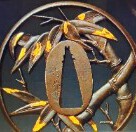
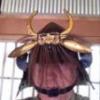



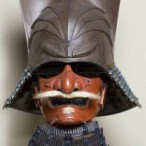

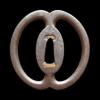



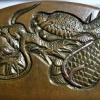
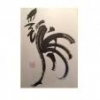
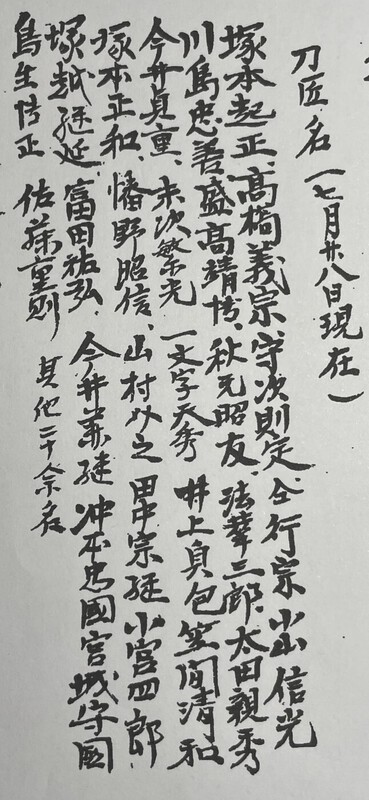
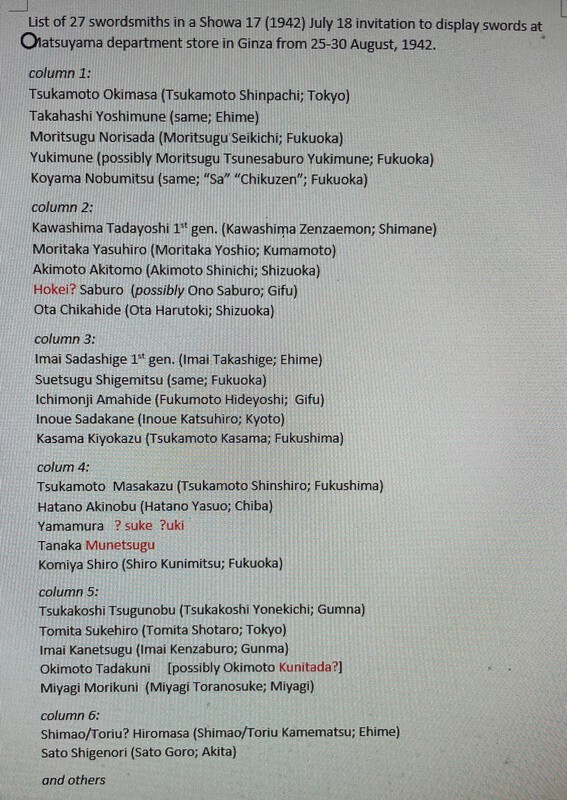
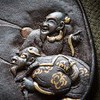







.thumb.jpg.8924c635b3be3b0101f879510f735bbb.jpg)
